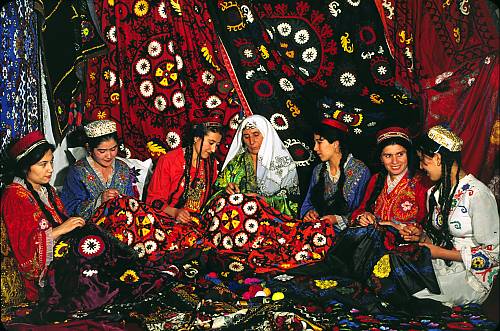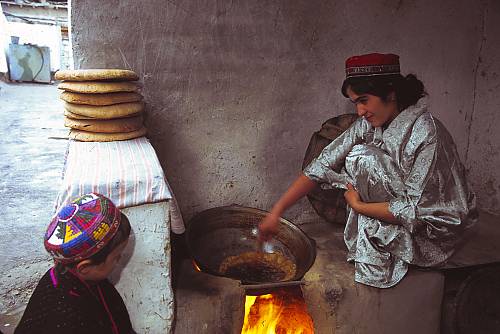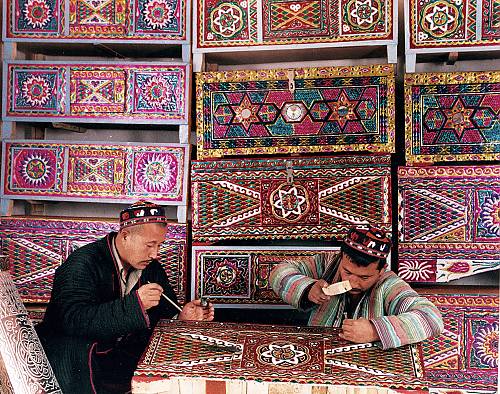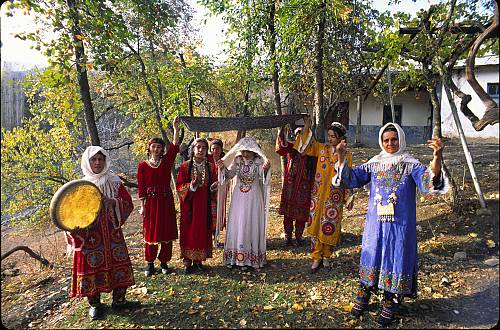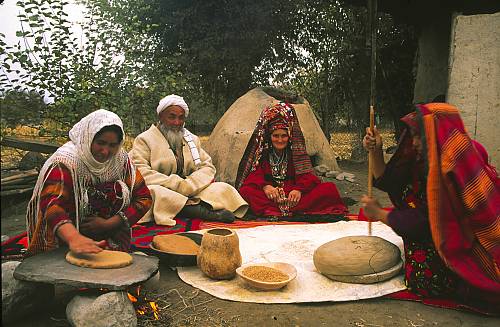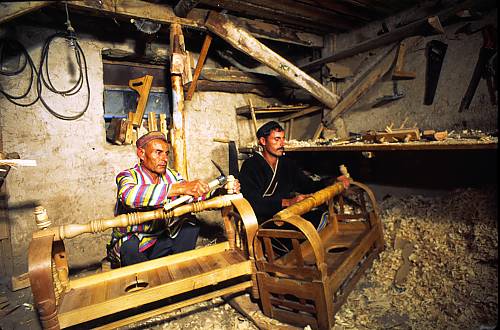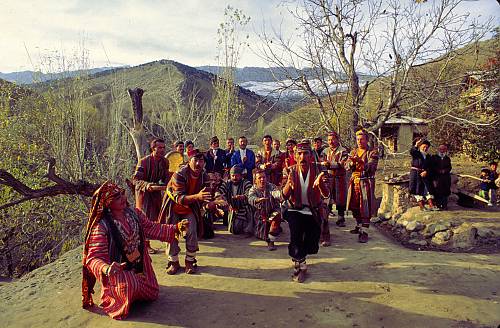Cultural space of Boysun District
Inscribed in 2008 (3.COM) on the Representative List of the Intangible Cultural Heritage of Humanity (originally proclaimed in 2001)

The Boysun District located in south-eastern Uzbekistan on the route from Asia Minor to India, is one of the oldest inhabited areas of Central Asia. With the diminishing importance of the Silk Road and the political changes in Central Asia, the region became quite isolated, which favoured the preservation of ancient traditions that show traces of several religions, including shamanistic beliefs, Zoroastrianism, Buddhism and Islam. Today the district is home to about 82,000 inhabitants.
Numerous traditional rituals are still alive: on the eve of the spring festival of Navruz, for instance, a sowing ritual is held with offerings of food. Family rites also persist: 40 days after a birth, the evil spirits are chased away with fire and ashes; the circumcision of boys is accompanied by goat fights and various games, such as wrestling and horse races. Ancient practices are still often used to conduct wedding ceremonies, funeral rites and shamanistic rituals to cure the sick. Among other popular traditions are ritual chants linked to annual festivals, epic legends and dances. Wind or string instruments accompany the lyrical chants. The Shalola folk music ensemble has collected popular songs and made an inventory of traditional instruments and costumes. The members of the group have also documented legends, epics and old melodies in the villages.
The policy of the Soviet era imposed a cultural model which left little room for traditional Boysun cultural and artistic expression. Today, there is a clear need for assistance to provide the communities with musical instruments and with technical equipment to document the various cultural expressions.
